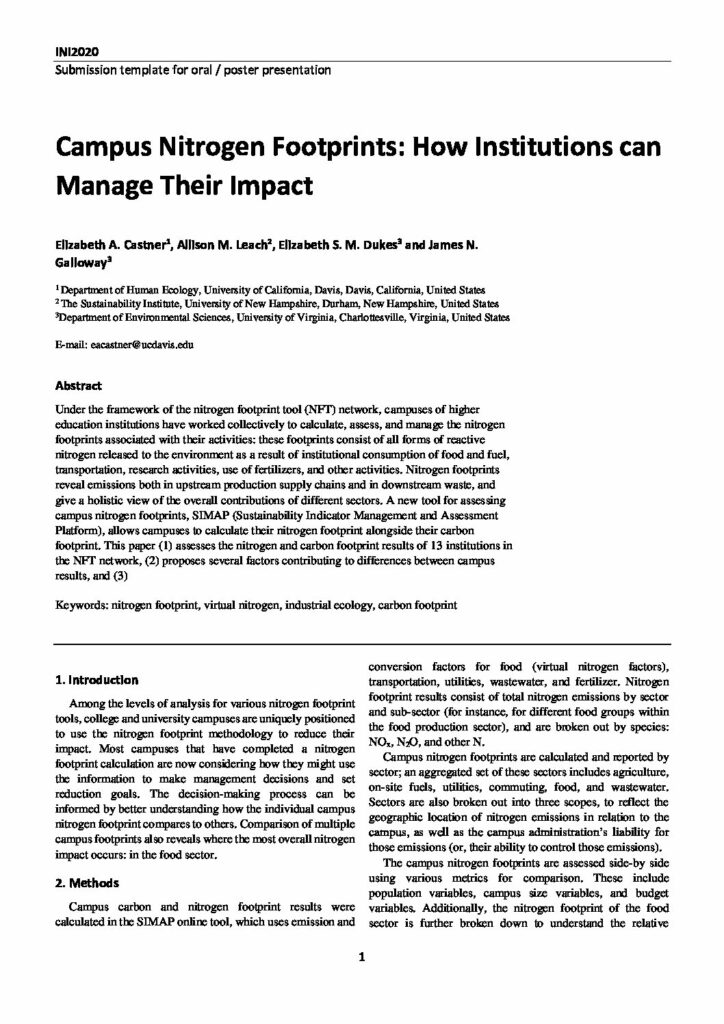Campus Nitrogen Footprints: How Institutions can Manage Their Impact

Under the framework of the nitrogen footprint tool (NFT) network, campuses of higher education institutions have worked collectively to calculate, assess, and manage the nitrogen footprints associated with their activities: these footprints consist of all forms of reactive nitrogen released to the environment as a result of institutional consumption of food and fuel, transportation, research activities, use of fertilizers, and other activities. Nitrogen footprints reveal emissions both in upstream production supply chains and in downstream waste, and give a holistic view of the overall contributions of different sectors. A new tool for assessing campus nitrogen footprints, SIMAP (Sustainability Indicator Management and Assessment Platform), allows campuses to calculate their nitrogen footprint alongside their carbon footprint. This paper (1) assesses the nitrogen and carbon footprint results of 13 institutions in the NFT network, (2) proposes several factors contributing to differences between campus results, and (3).
Among the levels of analysis for various nitrogen footprint tools, college and university campuses are uniquely positioned to use the nitrogen footprint methodology to reduce their impact. Most campuses that have completed a nitrogen footprint calculation are now considering how they might use the information to make management decisions and set reduction goals. The decision-making process can be informed by better understanding how the individual campus nitrogen footprint compares to others. Comparison of multiple campus footprints also reveals where the most overall nitrogen impact occurs: in the food sector.
